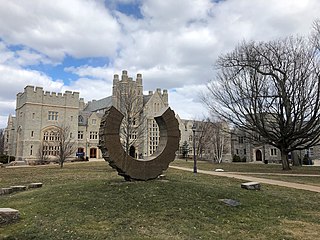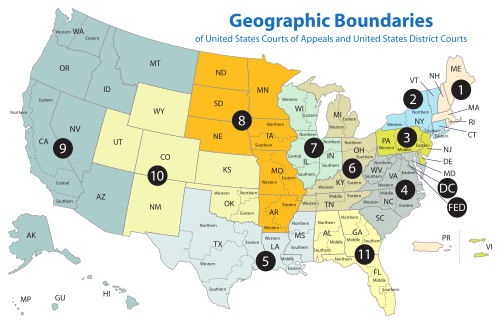Related Research Articles

The government of California is the governmental structure of the U.S. state of California as established by the California Constitution. California uses the separation of powers system to structure its government. It is composed of three branches: the executive, consisting of the Governor of California and the other constitutionally elected and appointed officers and offices; the legislative, consisting of the California State Legislature, which includes the Assembly and the Senate; and the judicial, consisting of the Supreme Court of California and lower courts. There is also local government, consisting of counties, cities, special districts, and school districts, as well as government entities and offices that operate independently on a constitutional, statutory, or common law basis. The state also allows direct participation of the electorate by initiative, referendum, recall and ratification.

Orleans County is a county located in the northeastern part of the U.S. state of Vermont. As of the 2020 census, the population was 27,393. Its county seat is the city of Newport. The county was created in 1792 and organized in 1799. As in the rest of New England, few governmental powers have been granted to the county. The county is an expedient way of grouping and distributing state-controlled governmental services.

The New Hampshire Supreme Court is the supreme court of the U. S. state of New Hampshire and sole appellate court of the state. The Supreme Court is seated in the state capital, Concord. The Court is composed of a Chief Justice and four Associate Justices appointed by the Governor and Executive Council to serve during "good behavior" until retirement or the age of seventy. The senior member of the Court is able to specially assign lower-court judges, as well as retired justices, to fill vacancies on the Court.

The University of Connecticut School of Law is the law school associated with the University of Connecticut and located in Hartford, Connecticut. It is the only public law school in Connecticut and one of only four in New England. In 2020 it enrolled 488 JD students.

Suffolk University Law School is the private, non-sectarian law school of Suffolk University located in downtown Boston, Massachusetts, across the street from the Boston Common and the Freedom Trail, two blocks from the State House, and a short walk to the financial district. Suffolk University Law School was founded in 1906 by Gleason Archer Sr. to provide a legal education for those who traditionally lacked the opportunity to study law because of socio-economic or racial discrimination. Suffolk is the fourth-oldest New England law school in continuous existence.
The Superior Court is the state court in the U.S. state of New Jersey, with statewide trial and appellate jurisdiction. The New Jersey Constitution of 1947 establishes the power of the New Jersey courts. Under the State Constitution, "'judicial power shall be vested in a Supreme Court, a Superior Court, County Courts and inferior courts of limited jurisdiction.'" The Superior Court has three divisions: the Appellate Division is essentially an intermediate appellate court while the Law and Chancery Divisions function as trial courts. The State Constitution renders the New Jersey Superior Court, Appellate Division the intermediate appellate court, and "[a]ppeals may be taken to the Appellate Division of the Superior Court from the law and chancery divisions of the Superior Court and in such other causes as may be provided by law." Each division is in turn divided into various parts. "The trial divisions of the Superior Court are the principal trial courts of New Jersey. They are located within the State's various judicial geographic units, called 'vicinages,' R. 1:33-2(a), and are organized into two basic divisions: the Chancery Division and the Law Division".
The Vermont Supreme Court is the highest judicial authority of the U.S. state of Vermont. Unlike most other states, the Vermont Supreme Court hears appeals directly from the trial courts, as Vermont has no intermediate appeals court.
The Government of the Commonwealth of Pennsylvania is the governmental structure of the Commonwealth of Pennsylvania as established by the Pennsylvania Constitution. It is composed of three branches: executive, legislative and judicial. The capital of the Commonwealth is Harrisburg.

The government of Vermont is a republican form of government modeled after the Government of the United States. The Constitution of Vermont is the supreme law of the state, followed by the Vermont Statutes. This is roughly analogous to the Federal United States Constitution, United States Code and Code of Federal Regulations respectively. Provision is made for the following frame of government under the Constitution of the State of Vermont: the executive branch, the legislative branch, and the judicial branch. All members of the executive and legislative branch serve two-year terms including the governor and senators. There are no term limits for any office.
The Government of Guam (GovGuam) is a presidential representative democratic system, whereby the President is the head of state and the Governor is head of government, and of a multi-party system. Guam is an organized, unincorporated territory of the United States with policy relations between Guam and the US under the jurisdiction of the Office of Insular Affairs.
A probate court is a court that has competence in a jurisdiction to deal with matters of probate and the administration of estates. In some jurisdictions, such courts may be referred to as Orphans' Courts or courts of ordinary. In some jurisdictions probate court functions are performed by a chancery court or another court of equity, or as a part or division of another court.

The Connecticut Superior Court is the state trial court of general jurisdiction. It hears all matters other than those of original jurisdiction of the Probate Court, and hears appeals from the Probate Court. The Superior Court has 13 judicial districts which have at least one courthouse and one geographical area court. Civil cases, administrative appeals, family matters, and serious criminal offenses are generally heard in a judicial district courthouse. All criminal arraignments, misdemeanors, felonies, and motor vehicle violations that require a court appearance are heard in one of the 20 geographical area courts.
The Judiciary of Vermont is the state court system of Vermont, charged with Vermont law.

Courts of Alabama include:
Courts of Georgia include:

Courts of Massachusetts include:

Courts of Michigan include:
Courts of Tennessee include:
The Judiciary of Georgia is a branch of the government of the State of Georgia established in Article Six of the Georgia constitution. This Article contains ten Sections which discuss the different courts, their powers and jurisdictions, and the role of the district attorney in Georgia's justice system.
References
- ↑ "Home Page of Supreme Court". Vermontjudiciary.org. Archived from the original on June 18, 2004. Retrieved 2008-12-17.
- ↑ "Vermont Superior Court: General Information". Vermontjudiciary.org. Archived from the original on April 26, 2004. Retrieved 2008-12-17.
- ↑ "Home Page of District Court". Vermontjudiciary.org. Archived from the original on August 31, 2004. Retrieved 2008-12-17.
- ↑ "Home Page of District Court". Vermontjudiciary.org. Archived from the original on August 31, 2004. Retrieved 2008-12-17.
- ↑ "Vermont Environmental Court: General Information". Vermontjudiciary.org. Archived from the original on June 19, 2004. Retrieved 2008-12-17.
- ↑ "Vermont Family Court: General Information". Vermontjudiciary.org. Archived from the original on February 16, 2003. Retrieved 2008-12-17.
- ↑ "Vermont Probate Information". Vermontjudiciary.org. Retrieved 2008-12-17.[ dead link ]
- ↑ "Vermont Judicial Bureau". Archived from the original on 2014-12-05.
- ↑ "United States District Court – Home Page". Vtd.uscourts.gov. Retrieved 2008-12-17.
